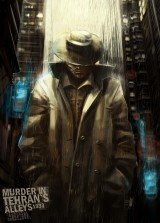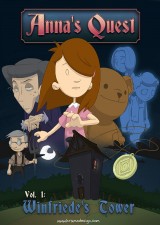Review for Liberated
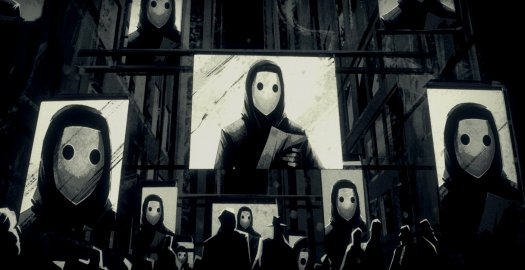
At its core, Liberated is an exciting, well-drawn, hard-boiled dystopian graphic novel. Unfortunately, it’s also a video game, and that’s where most of the problems arise. Its attempt at fusing comic book storytelling and side-scrolling combat are commendable. However, they never successfully meld and end up feeling like two separate game concepts unceremoniously smashed together. Drab shootouts make Liberated into a bit of a dull grind, though its smart world-building and gritty comic book art should be enough to push you through to the end.
In response to a (supposed) terrorist attack on a school several years prior, Minister Jeffrey Stroud implemented the CCS, an all-encompassing police database made up of everything from social media posts to online purchases. The CCS can scan your face to interpret your emotional state, and scour your phone for your visited locations, associations and activities. Submitting such personal information to the database is not voluntary. It’s a little 1984 and a little Minority Report, with the highly intrusive surveillance used as justification to stop, or even predict, criminal activity. Fail to adhere to CCS guidelines, and you’ll be forced to attend training where you will be reminded of your expectations as a citizen.
The game opens with players taking control of a contractor named Barry. Barry deals in the realm of digital property and information, running with sects of the population who are less than sympathetic to the CCS. Barry is arrested and given a stern warning about his actions, though the relative ease of his punishment is not so much thanks to the leniency of the system, but rather to the fact that he just so happens to be the estranged son of Stroud.
Shortly after his run-in with the law, Barry is kidnapped (or rather rescued) by a man named Tim. Tim is a member of the Liberated, a group of radical activists fighting to topple the government by exposing the CCS’s real function: control of the masses by the elite. Though a rebel in his own right, Barry had no affiliation with the Liberated prior to his abduction. However, after seeing the evidence they have gathered, he opts to join the rag-tag group of revolutionaries in their quest to bring down the government by any means necessary.
The game’s setup ties concepts like NSA surveillance, the CCP’s Social Credit System, and good ol’ fashioned Russian disinformation trolls together to create a sort of mega-dystopia. The simple masking of real-world events and issues make everything eerily believable because, in many ways, it is a direct mirror of the struggles we face in reconciling technology and liberty.
Liberated is divided into four comic book issues (or chapters), and though the story begins focused on Barry, it quickly moves to other members of the team, and even to the other side of the law. In fact, while the story begins and ends with the Liberated, the bulk of Issues 2 and 3 are played from the perspective of Frank Roberts. Frank is not only one of the police force’s highest-ranking officers, he’s one of the CCS’s architects, having played a role in its implementation. He’s not a dumb man, nor is he a blind follower, but his loyalty to the government is strong, and he truly believes it is working towards a greater good. His former colleagues Chang and Harry have both left the force, however, the latter taking a drastic turn to the side of the Liberated.
The changing perspective is a clever way to convey the grey areas of this aptly coloured black and white world, while instilling a sense of hope that Frank can follow in his former colleagues’ footsteps and right this horrible wrong. The body count on both sides is high by game’s end. Frank has no qualms killing anyone he suspects to be a terrorist, and the Liberated feel the same about those they perceive to be oppressors. While Frank and the police force are never made to look especially good, the Liberated are no angels either, and the price of attempting to change such a totalitarian system is displayed in all its bloody horror.
Liberated’s story is primarily told through a sort of interactive graphic novel, with players right-clicking to move through the story frame by frame and page by page. The palette is a three(ish)-toned black and white, while character designs are angular, with their sharp, geometric outlines often drenched in shadow. It all looks akin to an underground comic straight out of the 1980s. The art never bleeds outside the individual frame borders, with each panel serving as its own self-contained scene. These panels are usually slightly animated, with the art drifting or scaling cinematically and speech bubbles spawning and fading with each click.
While there is occasional interaction within the comic frames (besides clicking through bits of story), the actual gameplay segments take place in wider frames. In these side-scrolling sequences, the aesthetic switches to 3D graphics played on a 2.5D plane. The characters retain their angular look, but now move with convincing motion. The backdrops often recede far into the distance, showcasing the dusty hallways, empty offices, or vacant curfew-enforced streets in the foreground. Though much of the scenery feels like an endless concrete corridor, dynamic lighting effects and realistic-looking water do provide the occasional moment of beauty.
Though the voice acting is hit and miss, the pairing of voices with the animated frames goes a long way toward making the story more than just a digital comic book. Even the gameplay segments are voiced. All the actors suit their characters’ personas well, but there are a number of problems with inflection, with many lines feeling as though they were recorded without the rest of the script for context. Dramatic scenes often lack the urgency needed, and as a result end up falling completely flat. Frank, whom you’ll spend most of your time with, sounds like the hard-boiled, no-nonsense cop he’s supposed to be, yet in some of the more somber scenes, he sounds completely out of touch with what has just transpired.
Occasionally a comic frame contains more than just narrative exposition, requiring input from players in the form of timed decisions and Quick Time Events (QTEs). Failure or success in these can have an impact on the story. Early in the first issue, for example, when arriving back at Barry’s apartment, you are given the choice to surrender to the police or run away. My choice resulted in the book skipping over several blank frames before resuming its intended trajectory, spurring me to wonder what the consequences of the other choice would have been. Later on in the chapter, a QTE determines the struggle for a gun with another character. Whether you’re victorious in this outcome or not, the story moves forward.
QTEs also take place in the side-scrolling segments. These are almost always action sequences, with the camera adopting more cinematic angles to capture the car chase, shootout, or general mayhem unfolding. These sections rarely have an impact on the plot, instead simply serving as a changeup in pacing. Failing one of these sequences simply results in being pushed back to the beginning, but with the key prompts shuffled for the next attempt. They aren’t especially well animated or invigorating, but for what it’s worth, they do provide some gameplay variety.
The majority of the gameplay is not focused on QTEs or branching narrative choices. Rather, Liberated could be most accurately described a side-scrolling shooter with lite stealth and puzzle elements. You can move left or right, jump, sneak, and if equipped, draw and fire your weapon. Characters will automatically grab hold of the likes of ledges and ladders as soon as contact is made, making platforming easy to get the hang of. When wandering by an alley, alcove, or other nook indicated by a Q (if using a keyboard), you can also duck into cover. Providing you haven’t been seen by an enemy, you can lay in wait until your opponent passes, or silently take them out by sneaking up and killing them from behind. If you’re seen moving into one of these alcoves, foes will rush your position and a QTE will begin. If successful, you fight the enemy off and escape. If unsuccessful, you’re immediately neutralized and are sent back to the last checkpoint (usually only a minute or so back).
Though you can choose to tackle some situations stealthily, using it is rarely necessary, or beneficial. That’s because peace isn’t the name of the game, and you will eventually have to exchange fire. Wasting time hiding in ambush for an enemy to complete their patrol, only to fall victim to a swarm of opponents immediately afterward encouraged me to adopt a more guns-blazing approach. Aiming is done by pressing and holding the left mouse button to draw and aim your weapon, while the right fires a shot. You can reload while the gun is drawn, or simply holster and redraw it. Timing reloads in each unique sequence is where the game’s main challenge lies, as you may be swarmed by enemies on either side. While I normally prefer to play shooters with a mouse and keyboard, I found using the mouse sluggish here. Aiming seems to depend on pushing the mouse up and down more than it does hovering a cursor over your target, making the shooting a lot slower than it needs to be. Using the analog control sticks on a controller felt far better, and became my preferred way to play.
While the first issue features an exciting rooftop chase sequence, with an unarmed Barry trying to outrun the police, platforming segments like this are a rarity. In fact, Liberated’s gameplay formula very quickly boils down to walking right (or left), listening/watching for an enemy, and then getting the first shot off. The camera is often zoomed in quite close, giving you little time to react to an oncoming (or flanking) opponent. Enemies won’t fire on you until they actually enter the screen, giving you a bit of an advantage, but the beam from their flashlights (or laser scopes) announces their presence only a second or so out, meaning you’ll want your gun drawn, aimed, and loaded as often as possible. Enemies will sometimes lay in wait, hiding behind pillars, jumping out to shoot as soon as you are close enough. It can feel good to draw your weapon and fire off a quick round, landing a headshot even off-screen (connoted by onomatopoetic text). However, these shootout sections represent the bulk of the game’s run time, and that’s about all there is to them. Some rooms mix things up a bit, launching floating security drones or forcing you to shoot while going up elevators, but I found myself almost always dying my first few tries in these sections, as enemies often arrive just out of frame.
When engaging in combat on flat ground, it’s not too bad, but when trying to predict opposition fire as you’re swarmed from above and below, struggling to aim quickly enough to shoot back, it quickly becomes frustrating. It’s a shame the game spends so much of its time on fighting, as the platforming bits are quite fun. Swimming through flooded areas and weapon changes in later issues also provide some much-needed variety, though they soon disappear as quickly as they came.
Occasionally during the side-scrolling segments, a character will pull out their smart phone for a hacking mini-game of some sort. One of these games has you lining up wires on a rotatable grid to create a closed circuit. Another tasks you with guessing a four-digit passcode, done by inputting random numbers and being given feedback on your progress, Mastermind-style. Despite their relative ease, these mini-games are a lot of fun, swapping out overused gunplay for welcome espionage. In the second chapter, there are also hard drives strewn about the level, sometimes in plain sight and sometimes stashed away just off the beaten path. These drives contain classified information that can be accessed and read should you be inclined to learn more about the Liberated universe. Strangely, these hidden collectibles seem relegated only to the one issue, with all the environments before and after that devoid of secrets or optional content.
Level layouts are completely linear, and though you will occasionally have to backtrack in order to flip a switch or take out an enemy you missed, you’re hardly expected to memorize floorplans. While this keeps the action moving, it makes the areas you traverse feel somewhat inconsequential. Despite the nice visual touches and depth of the 2.5D environments, too often you’re just passing through them without paying attention, save for enemy placement.
Unfortunately I ran into several problematic scenarios, like opening my phone to solve a puzzle while enemies lay in wait, delaying their ambush until I finished my hack. There was no way to stop the mini-game once I had started, so I had to finish the puzzle only to be blasted to smithereens as soon as I was done. Perhaps it was foolish on my part to start while being pursued, but I would have liked a way out of the mini-game, or have the mini-game prompt frozen until the area was safe, instead of having to waste my time on a challenge that was going to land me back at the last checkpoint anyway.
Other issues were more technical in nature. Every time you start the game, it asks you to adjust a brightness slider to a suggested setting. I played Liberated both on my PC and TV, and found this suggested setting to be far too dark to see anything. Heavily shaded areas, like alcoves for hiding, were completely invisible, steeped in darkness, until suddenly illuminated by the hovering Q. I’d strongly suggest keeping the brightness setting a few tiers lighter than recommended.
In terms of actual glitches, I noted the occasional ragdoll malfunction after I’d kill an enemy, with their limbs stretching out as they spasmed on the ground. However, the bigger problem lies in the enemy AI. To further illuminate the stealth system’s frivolity, some segments have enemies with radically different levels of awareness on patrol. On more than one occasion I found myself tailing a guard oblivious to my presence while his colleague stood in wait, gun pointed straight at me behind his fellow guard who simply continued strutting along, whistling as if nothing was going on. Guards will note bodies on the floor, but the fact that they don’t react to what one another is doing not only breaks immersion, it also potentially entraps you in an ambush you cannot possibly anticipate.
There are good ideas here, but they aren’t evenly spread across the game. While I genuinely enjoyed the first issue’s mix of storytelling, narrative choices, and platforming, the game devolves into an uninteresting side-scrolling shooter by the second. Certain aspects of the gameplay are given more attention than others, and by Issue 4 I’d practically forgotten about QTEs and branching choices altogether. At least the final chapter restores a degree of variety, and the way the story concludes is genuinely satisfying in its own macabre sort of way. This climax is followed by a brilliantly done interactive social media segment, furthering the sense of hopelessness for the Liberated, but it doesn’t quite make up for the uneven slog it took to get there.
The game (not counting the two free DLC story add-ons, “For the Homeland” and “Glory to the Heroes”) only takes about three hours to complete on the Player difficulty setting (an easier difficulty setting, Reader, lessens the challenge levels of the shooting and QTE segments, and would likely result in a shorter play time), though trudging through Issues 2 and 3 made it feel almost twice that length. It's a shame so much time is spent shooting instead of platforming, solving puzzles, or choosing different paths. In the end, it won’t satisfy shooter fans looking for a grim Max Payne-style neo-noir piece, nor will it entice adventure game enthusiasts with its limited implementation of puzzles and unbalanced narrative interaction. There is a thoughtful and interesting story here with a few interesting gameplay elements sprinkled in, and it’s backed by a very respectable graphic novel presentation. Unfortunately, the positives are buried beneath lengthy stretches of tedium and frustration, making Liberated hard to recommend.













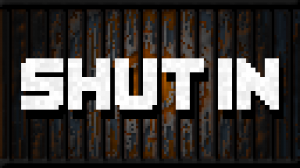


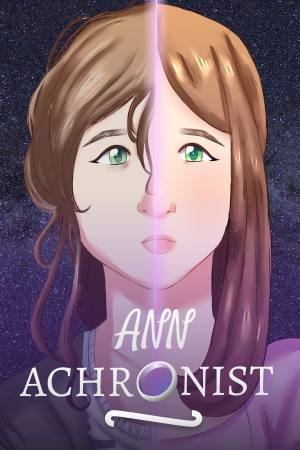



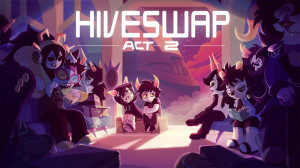
__medium.jpg)


